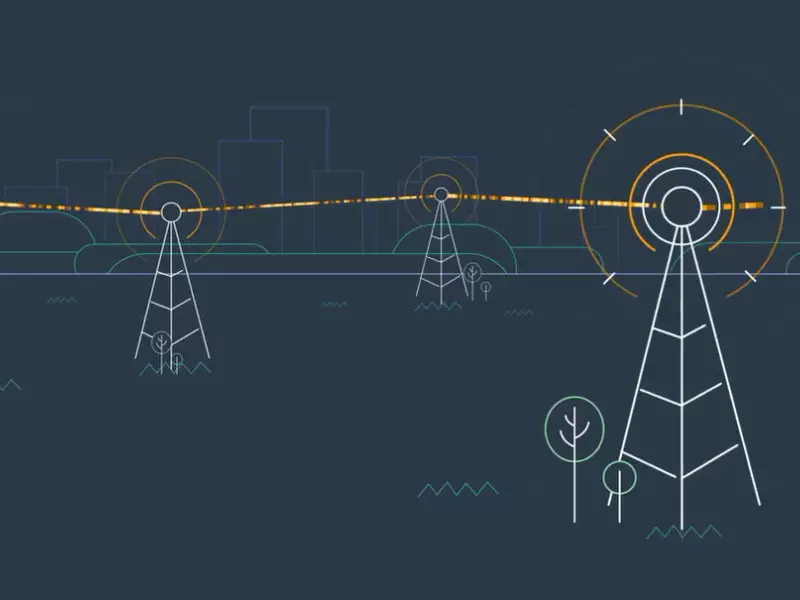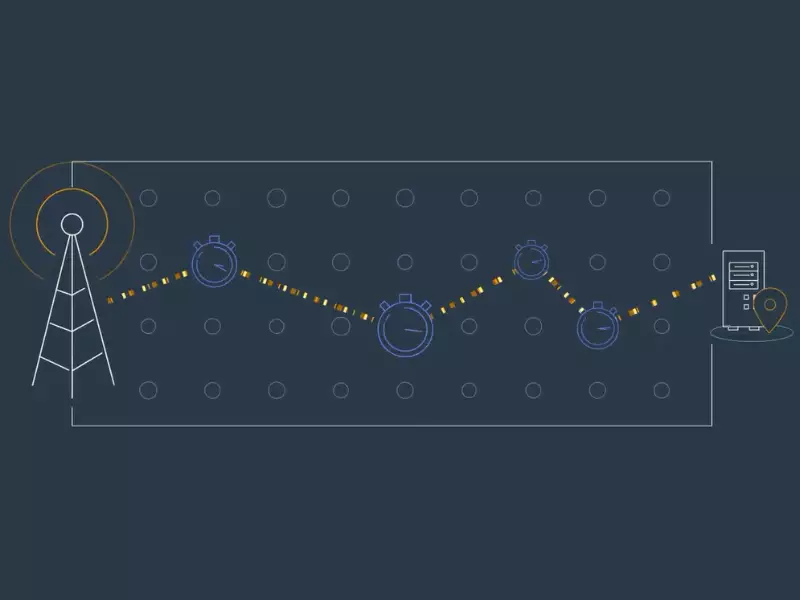The advent of 5G and Edge Computing marks a transformative era in the realm of technology and connectivity. As standalone technologies, both 5G and Edge Computing are engineered to revolutionize how data is processed and transmitted across networks, offering unprecedented speeds and efficiency. Together, they form a symbiotic relationship, setting the stage for an innovative leap in digital communication and infrastructure.
At the core of their relationship, 5G and Edge Computing work in tandem to enhance network performance and computing capabilities. 5G networks offer the high-speed connectivity essential for transmitting vast amounts of data, while Edge Computing processes this data closer to its source, reducing latency and bandwidth usage. This synergy not only accelerates the processing speeds but also significantly improves the reliability and responsiveness of digital services.
This collaboration promises to unlock new possibilities across various sectors, including healthcare, manufacturing, autonomous vehicles, and smart cities, by providing the backbone for technologies that require real-time data processing and decision-making. As we navigate through this article, we will explore how 5G and Edge Computing interplay to create a more connected and efficient world, highlighting their impact on industries and the challenges and prospects ahead.

5G Explained
What is 5G?
5G stands for fifth generation of mobile networks. It’s the latest global wireless standard after 1G, 2G, 3G, and 4G networks. 5G enables a new kind of network that is designed to connect virtually everyone and everything together including machines, objects, and devices.
Key Features of 5G
High Speed
5G networks offer significantly faster data speeds than 4G. Users can expect peak speeds of up to 20 Gbps.
Low Latency
5G reduces latency to almost real-time, making it about 1 millisecond. This is a drastic improvement over 4G’s latency.
Massive Network Capacity
5G networks can support a huge number of connected devices simultaneously, thanks to its large capacity.
Increased Reliability
5G is designed to be a more reliable network, ensuring consistent and uninterrupted connectivity.
Benefits of 5G Technology
- Faster download and upload speeds enable more efficient data transfer.
- Low latency enhances user experiences in gaming, VR, and AR.
- Supports innovation in industries such as autonomous driving, IoT, and smart cities.
- Higher capacity allows for more connected devices without degradation in performance.
Edge Computing Simplified
Definition of Edge Computing
Edge Computing refers to computing that’s done at or near the source of the data, instead of relying on the cloud at one of a dozen data centers to do all the work. It means processing data closer to where it’s being generated, which reduces latency and bandwidth use.
Core Principles of Edge Computing
Proximity to Data Sources
The closer the processing is to the data source, the faster and more efficiently data can be analyzed.
Decentralized Processing
By decentralizing data processing, edge computing reduces the load on a single central server or network.
Real-Time Data Processing
Edge computing enables immediate data processing, critical for time-sensitive applications.
Advantages of Edge Computing
- Reduces latency and improves response times.
- Lowers bandwidth usage and costs.
- Enhances privacy and security by processing data locally.
- Supports offline and low-bandwidth operations.
Synergy Between 5G and Edge Computing
Enhanced Connectivity
The combination of 5G and Edge Computing boosts connectivity options. With 5G’s high speed and Edge Computing’s localized data processing, devices can stay constantly connected, even in areas with traditionally poor network performance.
Reduced Latency
The synergy of 5G and Edge Computing significantly cuts down latency. This is crucial for applications that require instantaneous feedback, like autonomous driving and telemedicine.
Increased Bandwidth
Together, 5G and Edge Computing alleviate bandwidth concerns, making it easier to handle the surge of data from billions of IoT devices and services without overwhelming the network.
Impact on Industries
Healthcare Revolution
- Remote monitoring and telemedicine are becoming more feasible and reliable with low-latency 5G networks and edge computing.
- Enables real-time data analysis for faster diagnosis and treatment.
Manufacturing Transformation
- 5G and Edge Computing optimize production lines through real-time data analytics, predictive maintenance, and automation.
- Enhances safety by monitoring equipment and environment conditions in real-time.
Smart Cities Evolution
- Traffic management systems benefit from the instantaneous data processing of 5G and Edge Computing, improving flow and reducing congestion.
- Public safety is enhanced with real-time surveillance and emergency response capabilities.
Autonomous Vehicles Breakthrough
- Autonomous driving relies on the ultra-low latency and high reliability of 5G in conjunction with the local data processing of edge computing.
- Supports vehicle-to-everything (V2X) communications for safer and more efficient roads.

Technical Enhancements
Network Slicing and Flexibility
Network slicing is a pivotal feature of 5G that allows multiple virtual networks to be created atop a single physical network infrastructure. This capability enables tailored connectivity for different types of services, ranging from high-speed broadband to mission-critical communications. The flexibility provided by network slicing ensures that each slice can meet specific requirements regarding latency, speed, and capacity, which is vital for supporting a diverse range of applications and services, from IoT devices to autonomous vehicles.
Real-time Data Processing
The fusion of 5G and Edge Computing significantly boosts the capability for real-time data processing. This enhancement is crucial for applications requiring instant response times, such as robotic surgery, industrial automation, and financial transactions. By processing data closer to where it’s generated and utilizing 5G’s low-latency communication, systems can now react in milliseconds, opening up possibilities for advancements in many sectors that were previously hindered by slower data processing rates.
IoT and Device Proliferation
The Internet of Things (IoT) is experiencing unprecedented growth, thanks to the capabilities of 5G and Edge Computing. These technologies support the proliferation of connected devices by ensuring they can communicate more effectively, with greater speed, and in larger numbers than ever before. From smart home devices to industrial sensors, the enhanced connectivity and increased bandwidth allow for more data to be transmitted and processed, making IoT applications more versatile and efficient.
Challenges and Solutions
Security Concerns
As the adoption of 5G and Edge Computing expands, security remains a major concern. The decentralization of data processing and the vast number of connected devices create numerous potential vulnerabilities. Solutions to these challenges include advanced encryption, robust identity management, and the deployment of blockchain technology to secure data transactions across networks.
Infrastructure Investment
The rollout of 5G and the implementation of Edge Computing infrastructure require significant investment. Building out the necessary networks and data centers is costly and time-consuming. However, public-private partnerships and incremental deployment strategies can help mitigate these costs, allowing for gradual expansion and scaling based on demand.
Interoperability Issues
Ensuring that 5G and Edge Computing technologies work seamlessly across various platforms and networks is essential for their widespread adoption. Interoperability issues can hinder the potential benefits of these technologies. Adopting global standards and protocols, along with collaborative efforts among tech companies, can promote compatibility and ease integration challenges.
Future Prospects
AI and Machine Learning Integration
The integration of Artificial Intelligence (AI) and Machine Learning (ML) with 5G and Edge Computing is set to unleash new levels of efficiency and innovation. AI and ML can analyze the vast amounts of data generated by IoT devices in real-time, enabling smarter decision-making and predictive analytics. This convergence can lead to advancements in personalized healthcare, intelligent transportation systems, and autonomous robotics, among others.
Sustainable Technology Practices
As technology advances, sustainability becomes increasingly important. 5G and Edge Computing have the potential to drive more energy-efficient operations across various sectors. For instance, smart grids can optimize electricity distribution, reducing waste. Moreover, the ability to process data locally reduces the need for long-distance data transmission, which can lower overall energy consumption.
Global Adoption and Expansion
The global adoption and expansion of 5G and Edge Computing are critical for realizing their full potential. While there are challenges related to infrastructure costs and regulatory hurdles, the benefits these technologies offer in terms of connectivity, efficiency, and innovation make them indispensable for the future. Emerging markets have the opportunity to leapfrog directly to advanced technologies, potentially bridging the digital divide. Furthermore, international collaboration and investment can accelerate deployment and foster a more connected, digital world.
FAQs
What is 5G?
5G is the fifth generation of mobile networks, designed to provide faster, more reliable communication with ultra-low latency. It is a significant leap from its predecessor, 4G, offering speeds up to 100 times faster, which facilitates a new era of digital innovation by enabling the high-speed transfer of massive data volumes.
How does Edge Computing work?
Edge Computing refers to processing data closer to the source of data generation rather than relying on a centralized data-processing warehouse. This approach minimizes latency, reduces the strain on bandwidth, and enhances the efficiency of data processing, making it ideal for real-time applications and services.
Why is the relationship between 5G and Edge Computing important?
The relationship between 5G and Edge Computing is pivotal as it combines the high-speed connectivity of 5G with the localized data processing power of Edge Computing. This synergy enhances the performance and efficiency of digital services, supports the proliferation of IoT devices, and enables new applications that require real-time processing and decision-making.
What impact does the synergy of 5G and Edge Computing have on industries?
The synergy between 5G and Edge Computing has a profound impact on industries by enabling the deployment of more efficient, reliable, and responsive digital solutions. It revolutionizes healthcare through telemedicine and remote monitoring, transforms manufacturing with smart automation, drives the development of smart cities, and is key to the advancement of autonomous vehicles.
Conclusion
The relationship between 5G and Edge Computing represents a cornerstone in the evolution of digital connectivity and computing. By harnessing the speed of 5G and the proximity of Edge Computing, this partnership not only overcomes the limitations of previous generations but also paves the way for a future where technology seamlessly integrates into every facet of our lives, creating a more connected and efficient world.
As we look forward, the ongoing development and implementation of these technologies will continue to shape our digital landscape, bringing us closer to a reality where real-time data processing and ubiquitous connectivity are not just aspirations but everyday expectations. The journey towards this future is both exciting and challenging, highlighting the importance of continued innovation and collaboration across industries and sectors.
